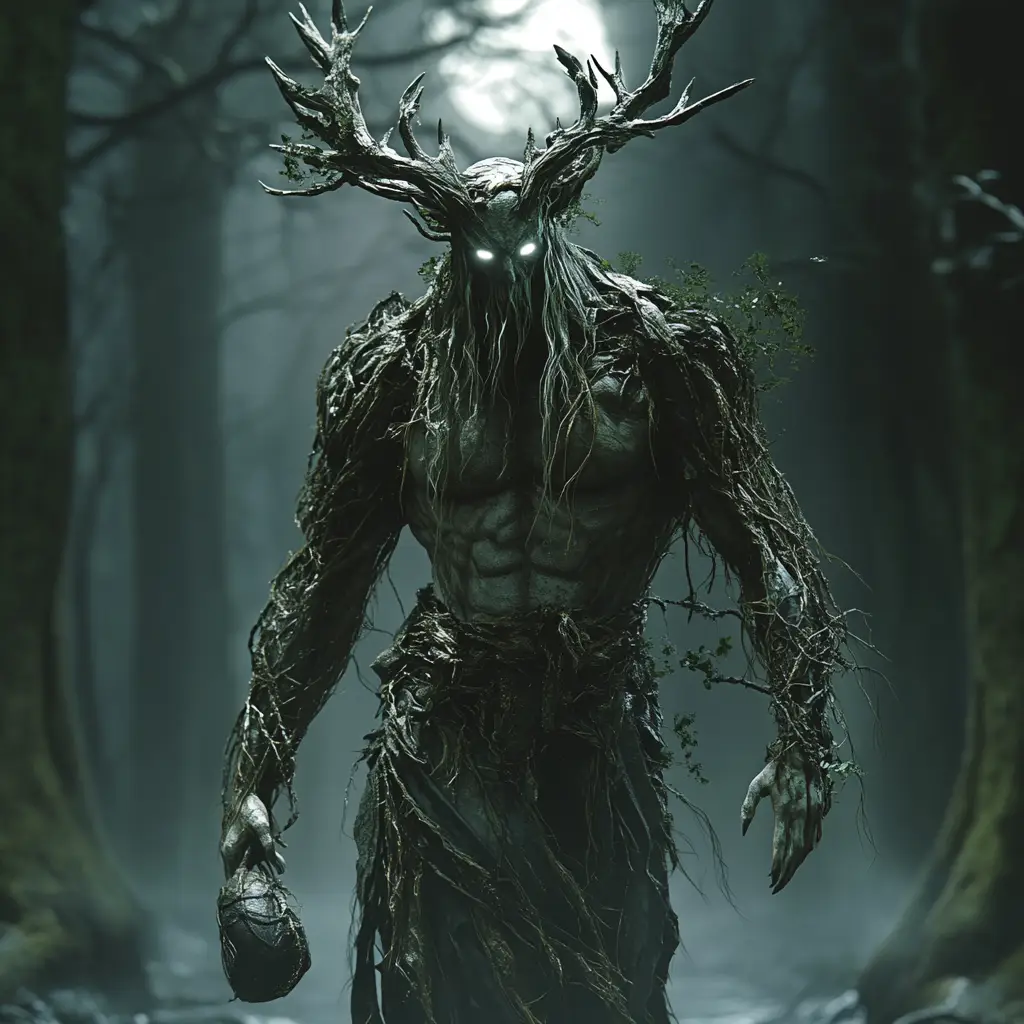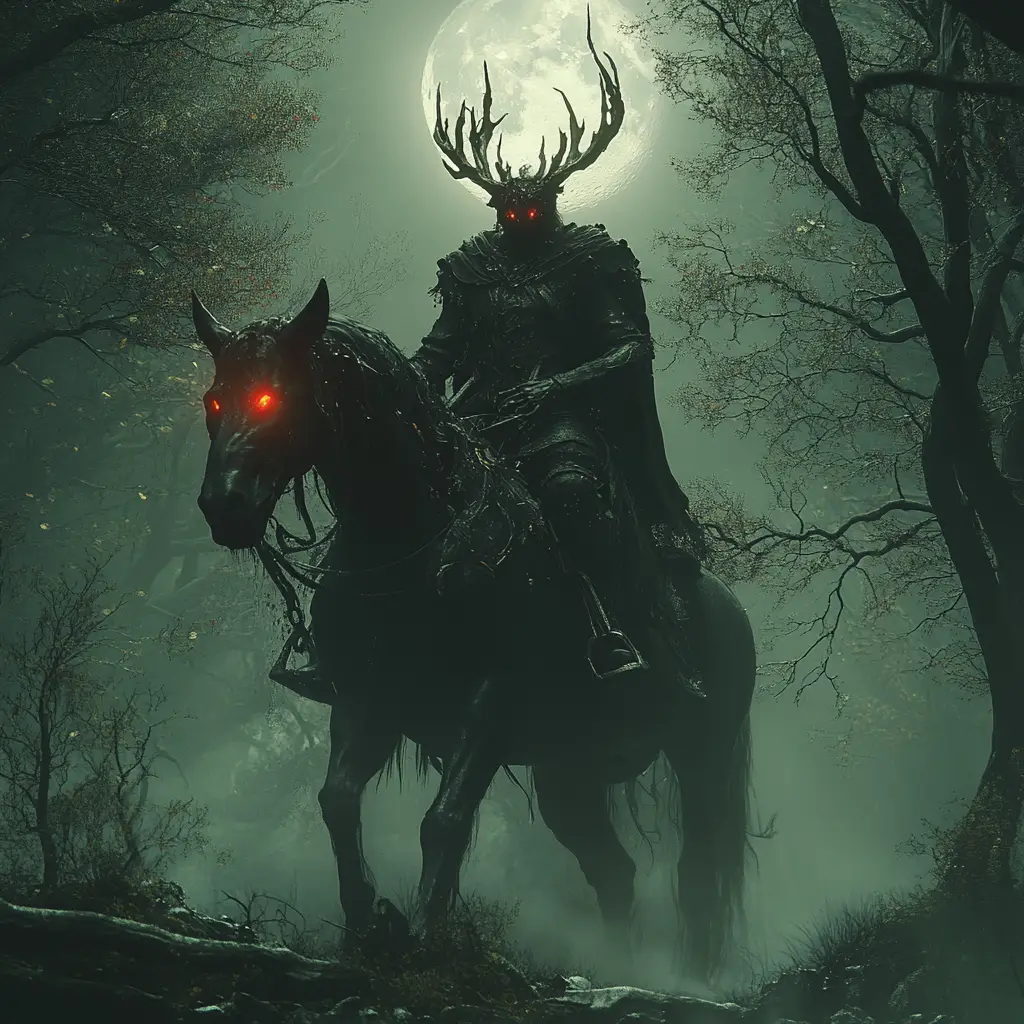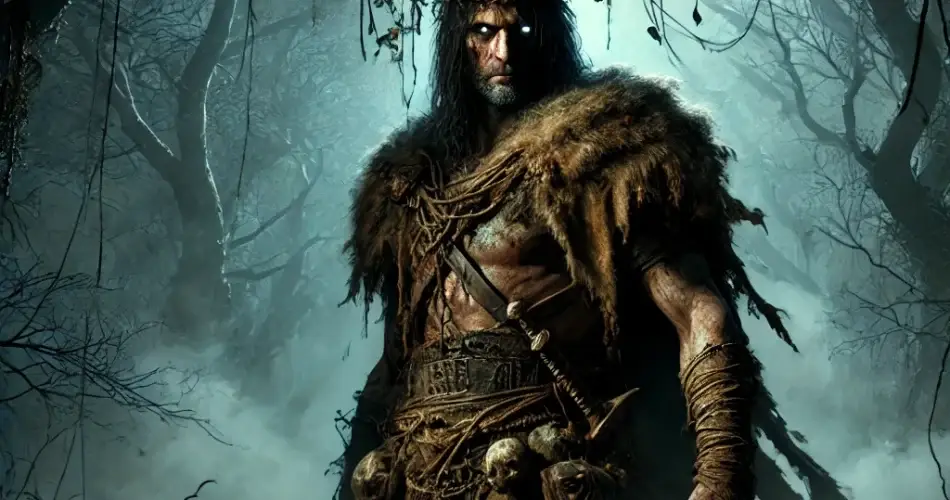Herne the Hunter is a mythological figure, often depicted as a ghostly huntsman with antlers, wearing a holly-green cloak, riding a flame-eyed horse, and sometimes accompanied by a pack of spectral hounds. He is said to haunt a specific oak tree in Windsor Forest.
According to legend, Herne possesses the power to curse trees, bewitch cattle, and terrify those who cross his path. Over time, Herne has evolved into a symbol of the untamed wild and the boundaries between life and death, as well as between gods and Devils.
This mythical figure is known by many other names, including The Ghostly Huntsman, The Wild Hunter, The Forest Spirit, The Horned God, The Green Man, and Cernunnos.
But who was Herne the Hunter, and how did his legend become so popular?
Who is Herne the Hunter?

The most common version of the Herne the Hunter legend portrays him as a former keeper of the royal forests under King Richard II. According to the tale, Herne was a loyal and skilled huntsman favoured by the king.
One day, while hunting in Windsor Forest, the king was attacked by a great stag. Herne, in a heroic act, saved the king’s life but was mortally wounded in the process. A mysterious figure—often described as a magician or forest spirit—healed Herne and saved his life.
Despite his bravery, Herne’s fortunes soon took a dark turn. He was falsely accused of wrongdoing, possibly treachery or poaching, by jealous rivals at court. Disgraced and dishonoured, Herne hanged himself from an oak tree in Windsor Forest, a tree that would later bear his name.
Following his death, Herne’s ghost is said to haunt the forest, particularly around Herne’s Oak. He appeared with stag antlers on his head, riding a spectral horse, and accompanied by ghostly hounds.
Powers of Herne the Hunter

Herne is frequently associated with the power to control the weather. Legend has it that when Herne appears, storms often follow. The sound of rattling chains and the sight of dark clouds gathering in the sky signal his presence. Thunder, lightning, and fierce winds also accompany him.
In some other versions of the legend, Herne also possesses the ability to summon and command spirits. These spirits might include other ghostly hunters, spectral hounds, or other entities that dwell within the forest.
It is said that those who encounter these spirits are often driven mad with fear or fall victim to the forest’s many dangers.
Modern Interpretations of Herne the Hunter
Over the years, the true origin or nature of Herne the Hunter has become rather complicated and multifaceted, with scholars drawing connections from well-known local English folklore to Celtic and Germanic legends.
One perspective is that Herne the Hunter might be a derivative of Cernunnos, the Celtic god known for his connection to nature, fertility, and the underworld. Cernunnos, also known as “The Green Man, ” is depicted with stag antlers, just like Herne. They also share a connection with an oak tree, symbolising strength and longevity in Celtic and Norse mythologies. As a sacred tree, the oak was often a focal point for rituals and ceremonies. Therefore, Herne’s haunting of “Herne’s Oak” in Windsor Forest is seen as a continuation of this reverence.
Margaret Murray, in her work “God of the Witches” (1930), argued that Herne is essentially a localised version of Cernunnos, with the name “Herne” serving as a colloquial title for this deity. She posits that Herne resulted from blending local folklore with older pagan traditions, which is a common occurrence as cultures interact and merge.
However, this blending brings a lot of contradictions with it. The more malevolent aspects of Herne’s character, such as his ability to wither plants, cause cattle to produce blood instead of milk, and bring misfortune to those who see him, are contrary to the neutral or even benevolent nature of a figure like Cernunnos. Though some suggest, it could indicate that Herne’s character was influenced by medieval Christian interpretations of pagan deities, who often recast once-revered figures as evil or demonic.
The name “Herne” itself has also been speculated to be connected to Wodan (or Odin) – a leader of fallen warriors – who is sometimes referred to as “Herian” in Germanic mythology. Thus, Herne is linked to the Wild Hunt, a spectral procession led by a god or folk hero that is prevalent in Northern European folklore.
Is Herne the Hunter Real?
For all we know, Herne the Hunter might have been a real person or legend, onto which Shakespeare overlaid a ghost story with a pinch of witchcraft mixed with fairy lore because it suits his play. It may not accurately represent actual local folklore, as Shakespeare was clearly not a historian.
Nevertheless, he set the pace for other writers to develop the (fictional) legend further. And, like a copy of a copy, the story only gets further distorted every time someone links Herne to someone or something else.
Perhaps one good lesson is not to “wear the horn”.
